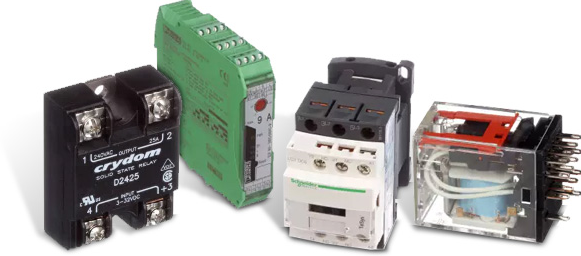Learn the difference between relay and circuit breaker. The basis of comparison include: description, use, power voltage input, capacity, how it works, amplification, contact breaking and arc prevention among others.

What Is A Circuit Breaker?
A circuit breaker is an automatically operated electrical switch designed to protect an electrical circuit from damage caused by excess current, typically resulting from an overload or short circuit. A circuit breaker consists of fixed and moving contacts known as electrodes. Under normal operating condition, the circuit remains closed and will not open automatically until and unless the system becomes faulty.
Types of Circuit Breakers
There are several types of circuit breakers among which include:
- Minimum Oil Circuit Breaker
- SF6 Circuit Breaker
- BOCB Circuit Breaker
- Axial Blast Circuit Breaker
- Plain Air Circuit Breaker
- Vacuum Circuit Breaker
What Is A relay?
A relay is a switch that open and close circuits electromechanically or electronically. It controls one electrical circuit by opening and closing contact in another circuit. More importantly, relays are used to switch smaller currents in a control circuit and do not usually control power consuming devices except for small motors and solenoids that draw low amps.
Nevertheless, relays can control larger voltages and amperes by having an amplifying effect because a small voltage applied to a relays coil can result in a large voltage being switched by the contacts.
Types of Relay
There are several types of relay which include:
- Reed Relay
- Thermal Relay
- Hybrid Relay
- Solid State Relay
- Electromagnetic Relay
The Difference
Description
The relay is a switching device which opens and closes circuits electromechanically or electronically as soon as the fault occurs in the power system. A circuit breaker is an automatically operated electrical switch designed to protect an electrical circuit from damage caused by excess current from an overload or short circuit. Its basic function is to interrupt current flow after a fault is detected or after it receives the signal from the relay.
Use
The relay is used for controlling a circuit with isolation between control circuit and the controlled circuit. Circuit breaker is used for disconnecting or isolating a circuit from the power source or a higher level circuit.
Power Voltage Input
The relay operates on low power input voltage whereas the circuit breaker is an automatic on load device.
Capacity
The relay can operate one or more circuits at a time whereas circuit breakers are only used one per circuit.
How it Works
Relay is directional and non-directional because is responsible for controlling device whereas circuit breaker is non-directional because it is only responsible for switching device.
Nature
The relay is a switching and sensing device, while the circuit breaker is an isolating or disconnecting device. In this regard, relay is thus used to switch circuits with small currents while circuit breakers are used in circuits with large currents.
Amplification
Circuit breaker cannot be considered to act as an amplifier for discrete signals whereas relay can be considered as an electrical amplifier for discrete signals.
Contact Breaking
The relay does not break the contact; it only detects the error and sends the signals to the circuit breaker whereas the circuit breaker disconnects the contact.
Arc Prevention
A circuit breaker has mechanisms to detect and prevent the formation of arcs in the circuit whereas a relay does not have the ability to prevent arcs.
Also Read: Difference Between Fuse And Circuit Breaker
The Difference Between Relay and Circuit Breaker In Tabular Form
| BASIS OF COMPARISON | RELAY | CIRCUIT BREAKER |
| Description | The relay is a switching device which opens and closes circuits electromechanically or electronically as soon as the fault occurs in the power system. | Circuit breaker is an automatically operated electrical switch designed to protect an electrical circuit from damage caused by excess current from an overload or short circuit. |
| Use | The relay is used for controlling a circuit with isolation between control circuit and the controlled circuit. | Circuit breaker is used for disconnecting or isolating a circuit from the power source or a higher level circuit. |
| Power Voltage Input | The relay operates on low power input voltage. | The circuit breaker is an automatic on load device. |
| Capacity | The relay can operate one or more circuits at a time. | Circuit breakers are only used one per circuit. |
| How it Works | Relay is directional and non-directional because is responsible for controlling device. | Circuit breaker is non-directional because it is only responsible for switching device. |
| Nature | The relay is a switching and sensing device and thus relay is thus used to switch circuits with small currents. | The circuit breaker is an isolating or disconnecting device thus circuit breakers are used in circuits with large currents. |
| Amplification | Relay can be considered as an electrical amplifier for discrete signals. | Circuit breaker cannot be considered to act as an amplifier for discrete signals. |
| Contact Breaking | The relay does not break the contact; it only detects the error and sends the signals to the circuit breaker. | The circuit breaker disconnects the contact. |
| Arc Prevention | A relay does not have the ability to prevent arcs. | A circuit breaker has mechanisms to detect and prevent the formation of arcs in the circuit. |
Also Read: Difference Between Relay And Contactor